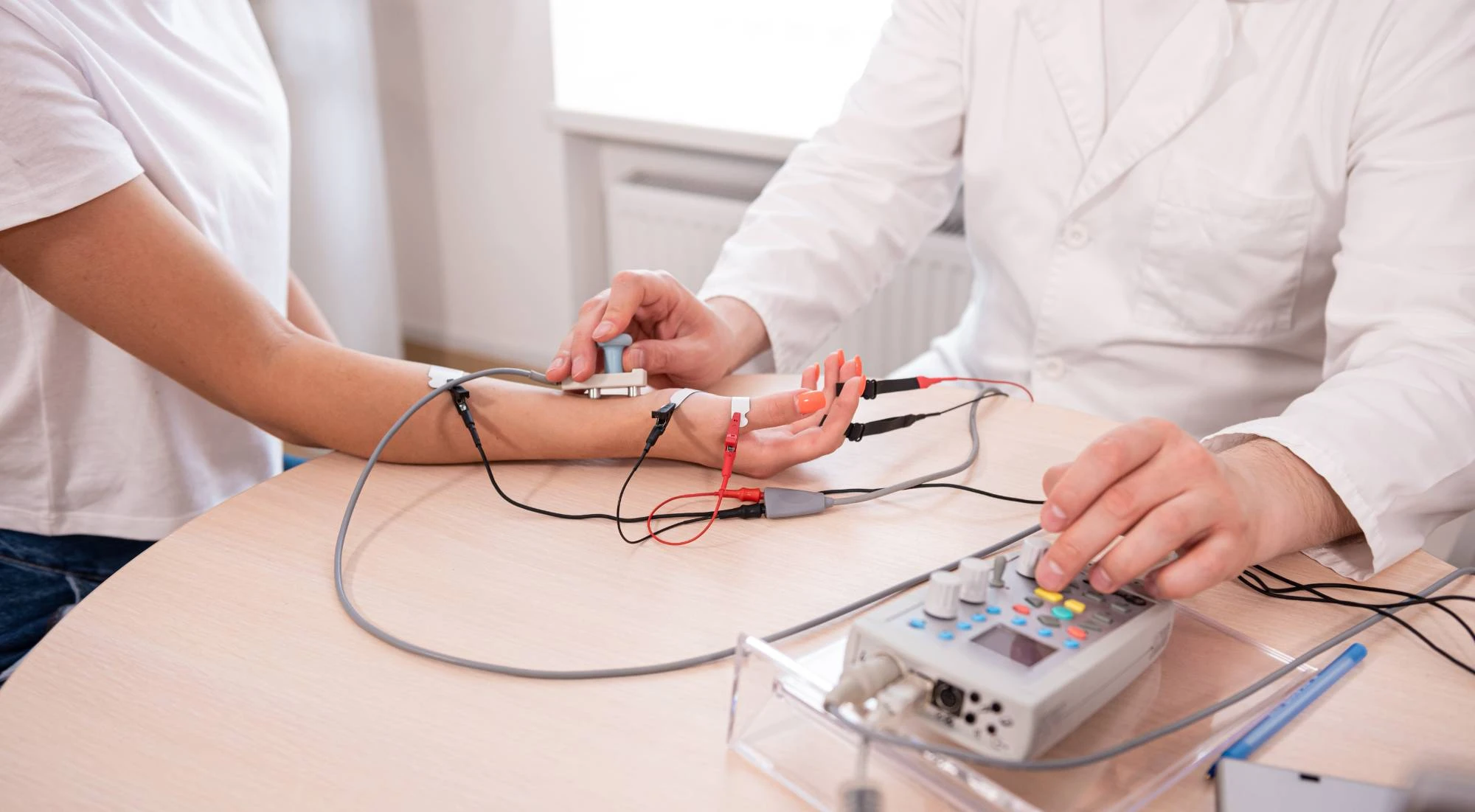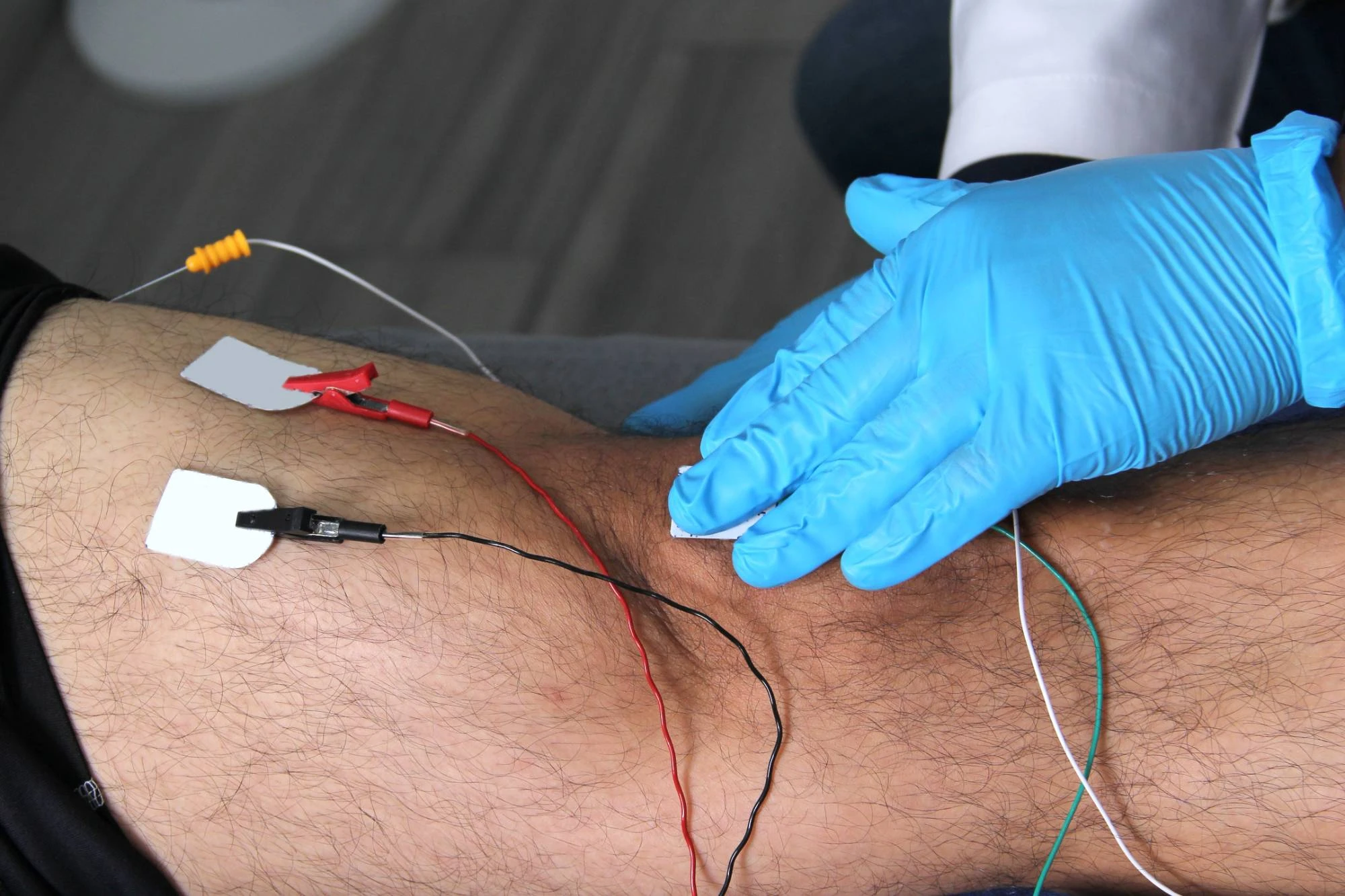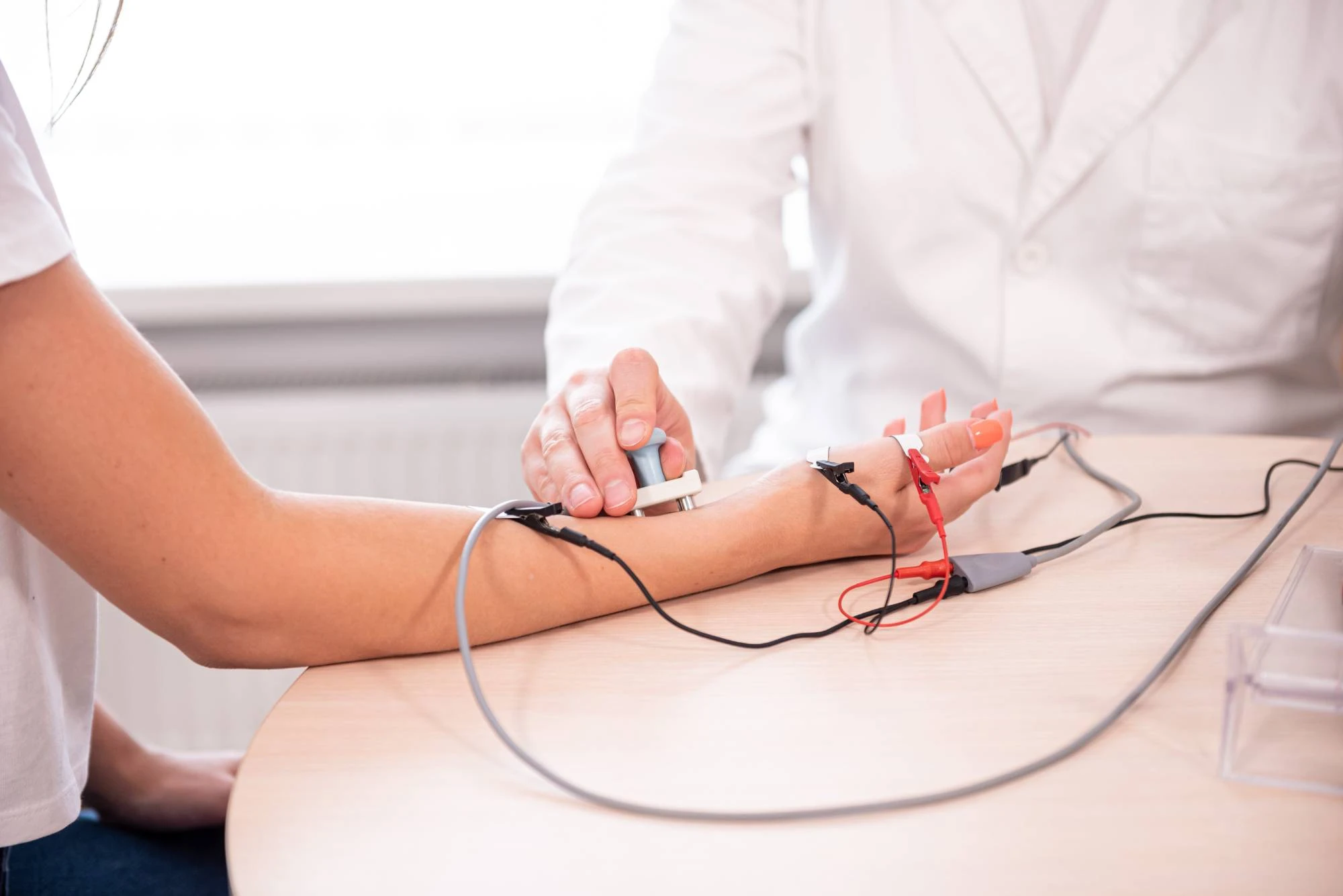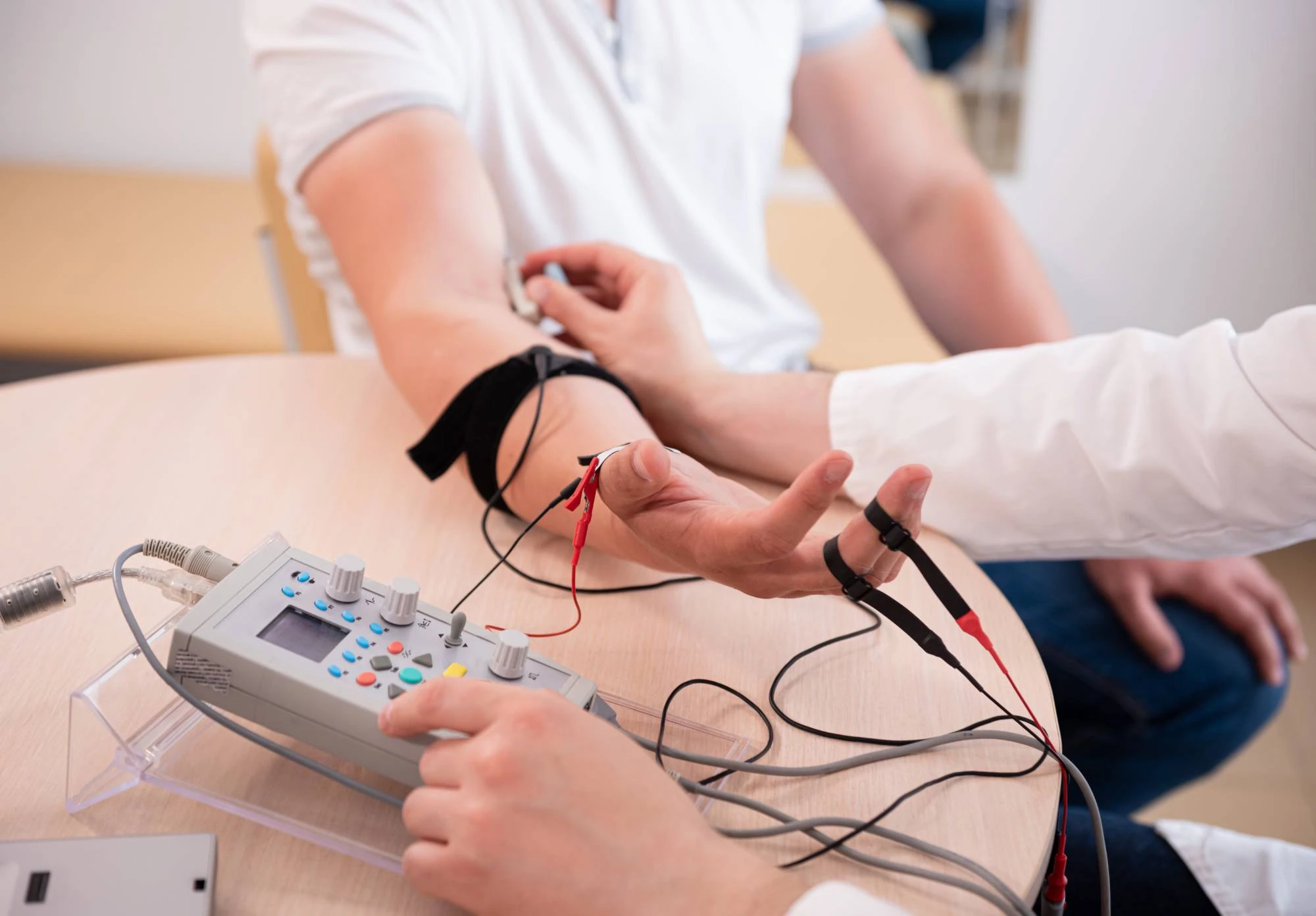Advanced electromyography testing that pinpoints exactly what’s causing your symptoms, with results you can understand.

Reviews

You’ve been dealing with numbness, tingling, or muscle weakness for weeks or months. Your primary doctor ran some basic tests, but you still don’t have real answers. That uncertainty is exhausting.
EMG testing changes that. This diagnostic procedure measures the electrical activity in your muscles and nerves, showing us exactly where the problem is and how severe it might be. Instead of guessing about your condition, you get concrete information about what’s happening in your body.
When the test is complete, you’ll understand whether you’re dealing with nerve damage, muscle disorders, or something else entirely. More importantly, you’ll know what steps to take next. No more wondering if your symptoms will get worse or if you’re missing something serious.
NY Spine Medicine has been helping South Florida patients get accurate diagnoses for years. Our team includes board-certified specialists who understand that you need more than just test results – you need someone who can explain what those results mean for your daily life.
We focus specifically on spine and nerve conditions, which means we see cases like yours regularly. We know which symptoms warrant immediate attention and which ones respond well to conservative treatment.
Located conveniently in Biscayne Gardens, we accept most major insurance plans and work with patients to make testing accessible and affordable.

The EMG test has two parts: nerve conduction study and electromyography. During the nerve conduction portion, small electrodes are placed on your skin to measure how well electrical signals travel through your nerves. You’ll feel brief, mild electrical pulses – uncomfortable but not painful.
For the electromyography portion, a thin needle electrode is inserted into specific muscles to record their electrical activity. The needle is much thinner than those used for blood draws, and most patients tolerate it well. You’ll be asked to relax certain muscles, then contract them gently while the equipment records the signals.
The entire process typically takes 30 to 60 minutes, depending on which nerves and muscles need testing. Results are available immediately, and your doctor will review the findings with you before you leave. You’ll get a clear explanation of what the test revealed and discuss your treatment options right away.

Ready to get started?
Your EMG testing includes both nerve conduction studies and muscle testing to give you a complete picture of what’s happening. We test multiple nerve pathways and muscle groups to identify patterns that might point to specific conditions like carpal tunnel syndrome, pinched nerves, or muscle disorders.
The equipment we use is state-of-the-art, providing precise measurements that help distinguish between different types of nerve problems. This accuracy matters because treatment for a compressed nerve is very different from treatment for nerve damage or muscle disease.
After testing, you receive a detailed report explaining the findings in terms you can understand. We’ll show you exactly which nerves or muscles are affected and discuss whether your condition is likely to improve with treatment, stay stable, or require ongoing management.

New York:
Florida:
Support